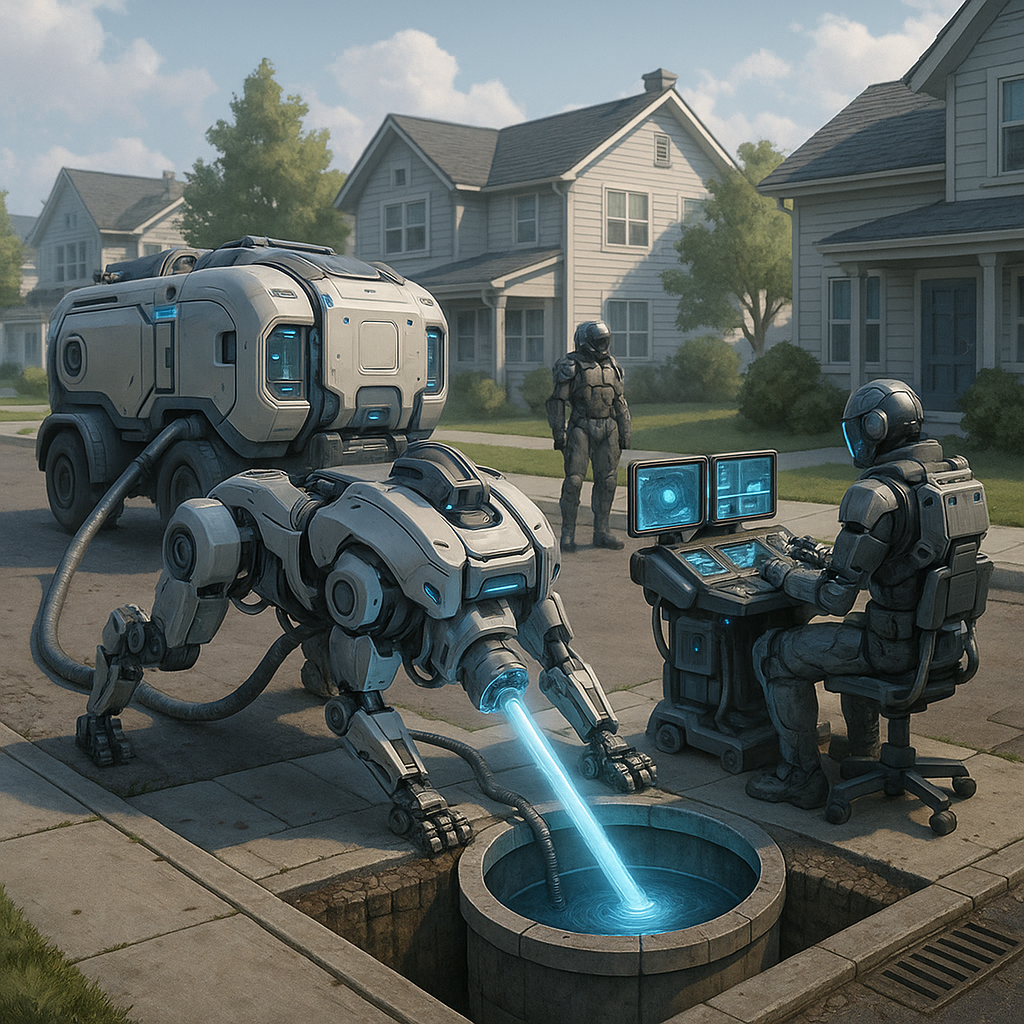Trenchless Repair: The Future of Sewer System Maintenance
Explore how trenchless repair installation is revolutionizing sewer maintenance with cutting-edge technology and sustainable practices in 2024.

Introduction
Trenchless repair installation is rapidly transforming the sewer inspection and plumbing industry, driven by technological advancements and evolving market demands. As we move into 2024, the integration of robotic and autonomous systems, AI-driven analytics, and sustainable practices are at the forefront of sewer system maintenance and repair.
Technological Innovations in Trenchless Repair
Robotic and Autonomous Inspection Systems
The use of robotic crawler cameras equipped with high-definition, pan-and-tilt capabilities and AI-powered defect detection is revolutionizing the accuracy and efficiency of sewer inspections. These systems allow professionals to conduct thorough evaluations with minimal labor and enhanced safety.
- Pan-and-Tilt Cameras: Provide detailed visuals of sewer conditions
- AI Defect Detection: Automates the identification of potential issues
- Real-Time Monitoring: Enables immediate decision-making and reduces downtime
Wireless and Remote Inspection Technologies
Wireless technologies, including drones and robotic arms, are becoming increasingly popular, allowing for safer access to hard-to-reach areas.
- Drones: Offer aerial views and access to remote locations
- Robotic Arms: Enhance precision in inspection and repair tasks
- Continuous Monitoring: Facilitates ongoing assessment without manual intervention
Industry Regulations and Standards
Regulatory bodies are increasingly focusing on environmental sustainability and infrastructure resilience. These regulations are driving the adoption of trenchless technologies that support predictive maintenance and data-driven decision-making.
- Sustainability Goals: Encourage the use of non-invasive repair methods
- Predictive Maintenance: Utilizes data analytics to anticipate issues before they escalate
- Compliance: Aligns with stricter wastewater management laws
Market Trends and Growth
The demand for mobile sewer inspection systems is on the rise, fueled by government infrastructure investments and a need for cost-effective, non-invasive solutions.
- Government Investments: Increasing funding for infrastructure upgrades
- Non-Invasive Solutions: Reducing environmental impact and disruption
- Market Expansion: Growth in both residential and municipal sectors
Safety Protocols and Best Practices
Emphasizing the safety of workers, the industry is shifting towards remote operation of inspection equipment to minimize exposure to hazardous environments.
- Remote Operation: Reduces the need for physical presence in risky areas
- Robotic Systems: Enhance safety without compromising inspection quality
- Wireless Data Transmission: Facilitates secure and efficient data handling
Case Studies and Success Stories
Recent projects employing robotic sewer camera systems, such as the Easy Sight X5-HS, have demonstrated significant improvements in efficiency and cost savings.
- Reduced Crew Size: Fewer personnel required on-site
- Increased Inspection Speed: Faster project completion
- Enhanced Reporting: High-quality, annotated HD video reports
Cost and Pricing Analysis
While the initial investment in robotic inspection equipment may be high, the long-term savings in labor and increased accuracy make it a cost-effective choice.
- Initial Costs: Higher upfront investment
- Long-Term Savings: Reduced labor and repeat inspections
- Value Proposition: Enhanced efficiency and accuracy improve profitability
Practical Tips for Trenchless Repair Implementation
- Invest in Training: Ensure your team is well-versed in using advanced inspection technologies.
- Leverage AI Analytics: Utilize AI to interpret data and make informed decisions.
- Prioritize Sustainability: Opt for eco-friendly methods that align with current regulations.
- Stay Updated: Keep abreast of industry trends and technological advancements.
Conclusion
Trenchless repair installation represents a paradigm shift in how sewer systems are maintained and repaired. By embracing cutting-edge technology, adhering to regulatory standards, and focusing on sustainability, businesses can enhance their operational efficiency and environmental impact.